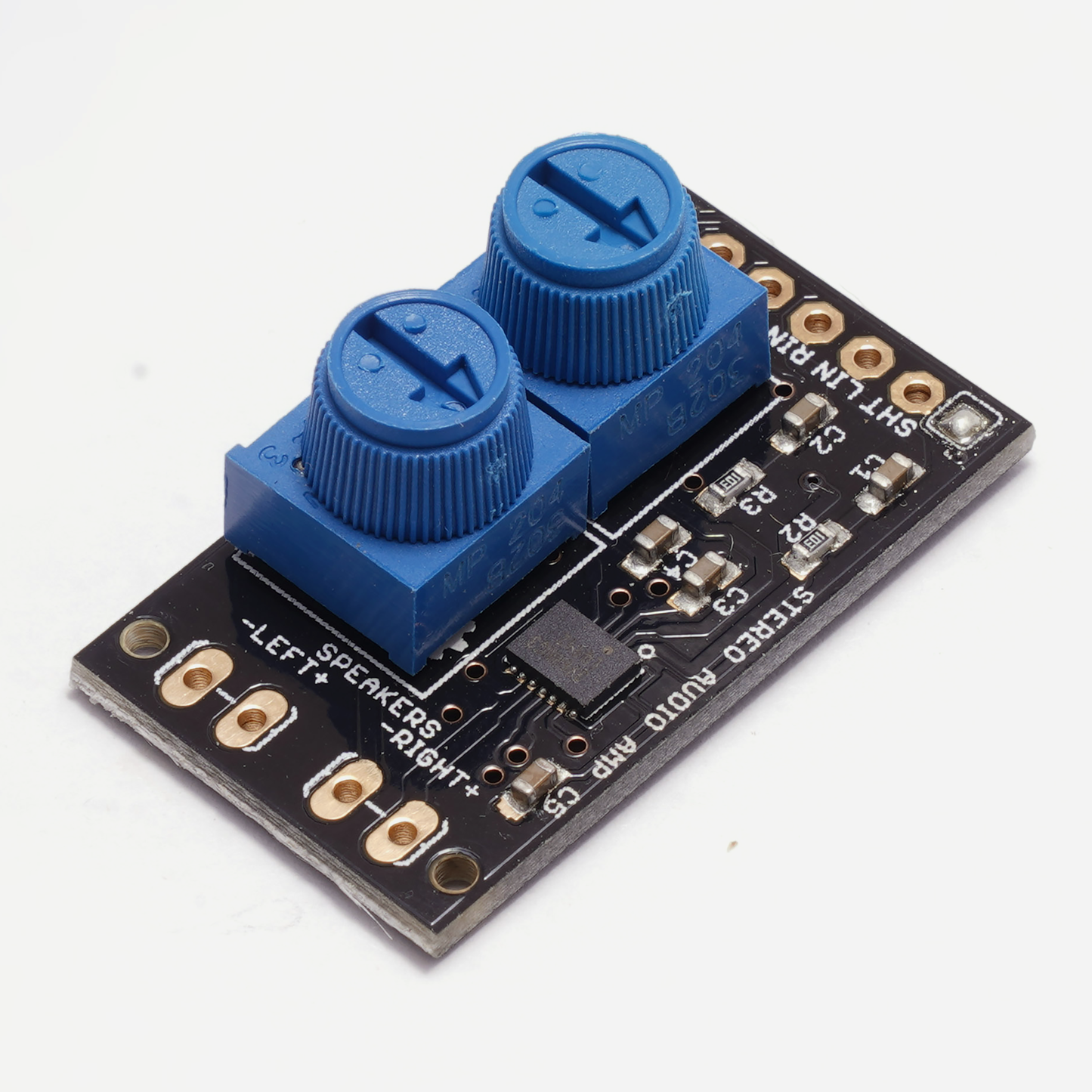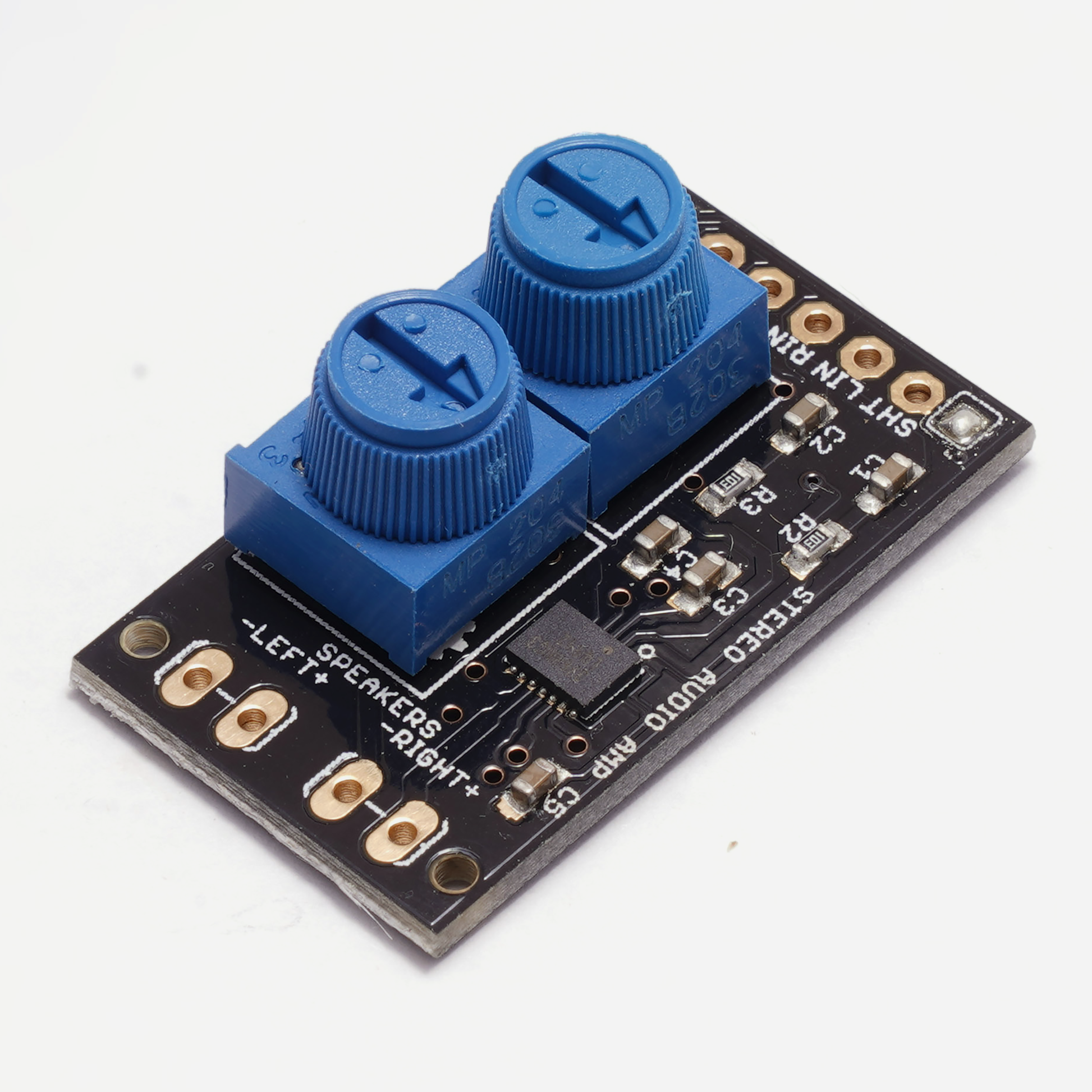Stereo Audio Amplifier
SKU: MD0410Couldn't load pickup availability
Share
The Modern Device Stereo Amplifier breakout board is a minimal Stereo Amp designed to amplify small projects, such as amplifying the Fluxamasynth Shield, or an Adafruit Wave Shield for personal use. It is probably not loud enough for a good dorm-room dance party. It is also great for increasing the volume level of your Arduino or other micro-controller when used in musical projects.
For this amplifier, we have used real analog volume controls to make adjustment of volume easy. While it can be useful to have software control over output volume, it can also be useful in many situations, to have physical control over output volume. The example I cited in my post on the mono amp is still the first one that comes to (my) mind. You have a piece installed in an art gallery and you want it to be heard during the opening of the exhibit. Typically art galleries are very crowded during openings, people have been drinking, and the volume is loud. Afterwards there typically are many fewer people in the gallery, with much lower sound levels. Being able to physically tweak the volume is an easy way to set appropriate volume is very useful. Many other situations exist, even with digital sound, where a simple potentiometer is more effective than two buttons with some kind of "up-down" digital interface.
The Modern Device Stereo audio amplifier breakout board uses the LM4992, one of National Semiconductor's "Boomer" amps. It uses what in the industry is referred to as a "bridge-tied load". This is an efficient system that increases the total amount of power available to the speaker with low-voltage systems. It also eliminates the need for an output capacitor, (like in the LM386) which tends to be bulky and can limit the low-end response. It has a shutdown pin to put the chip to sleep, just in case you're trying to build a super low-power microcontroller application that spends most of its time sleeping.
All this in a really small package. Here are some specs with a 1khz signal.
| Power Out | VCC | THD & noise | Load (speaker ohms) |
| 1W | 5 volts | .1% | 8 Ω |
| .4W | 3.3 volts | .1% | 8 Ω |
This is not quite CD quality sound, since this chip was designed for cell phones, but then neither are most of your other electronic appliances (such as phones and mp3 players) these days. Pop music still seems to be doing fine. CD's maybe not so much.
Ships with a two terminal blocks, a five pin male header, and two 200K pot which all not soldered onto the board. All surface mount parts are assembled and tested and ready to go.
Resources:


